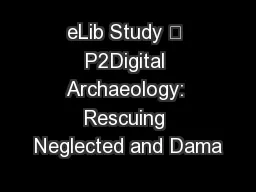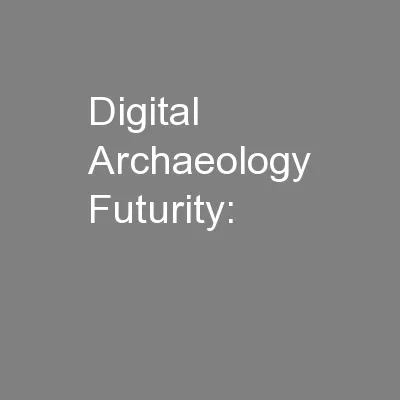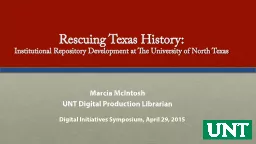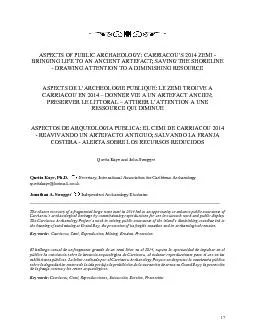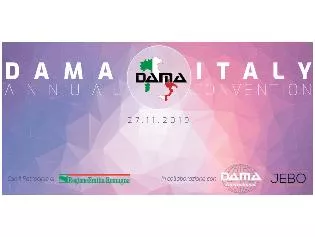PDF-eLib Study 缀 P2Digital Archaeology: Rescuing Neglected and Dama
Author : calandra-battersby | Published Date : 2016-07-22
x0100x0200x0300x0400x0500x0600x0100February 1999Humanities Advanced Technologyand Information Institute HATIIUniversity of Glasgowhttpwwwhatiiartsglaacuk Seamus
Presentation Embed Code
Download Presentation
Download Presentation The PPT/PDF document "eLib Study 缀 P2Digital Archaeolog..." is the property of its rightful owner. Permission is granted to download and print the materials on this website for personal, non-commercial use only, and to display it on your personal computer provided you do not modify the materials and that you retain all copyright notices contained in the materials. By downloading content from our website, you accept the terms of this agreement.
eLib Study 缀 P2Digital Archaeology: Rescuing Neglected and Dama: Transcript
Download Rules Of Document
"eLib Study 缀 P2Digital Archaeology: Rescuing Neglected and Dama"The content belongs to its owner. You may download and print it for personal use, without modification, and keep all copyright notices. By downloading, you agree to these terms.
Related Documents

